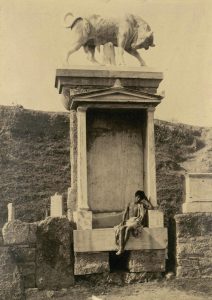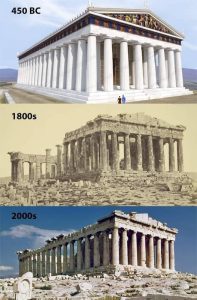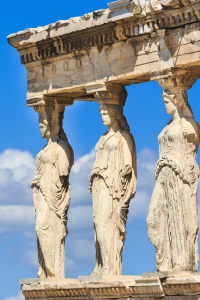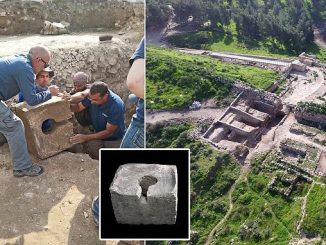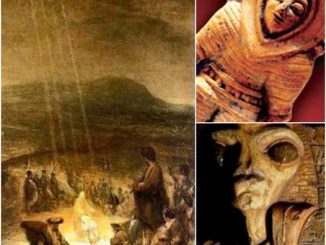In the historic district of Kerameikós, Athens, an evocative photograph from 1895 captures a moment frozen in time. It depicts a Greek boy sitting leisurely at the ancient Temple of Dionysus, against a backdrop that speaks volumes about Greece’s rich archaeological and cultural heritage.
The Temple of Dionysus in Kerameikós
The Temple of Dionysus, a significant yet often overlooked historical site, lies in the heart of Kerameikós, known predominantly for its cemetery and as a significant pottery district in ancient Athens. This temple, dedicated to Dionysus, the god of wine, festivity, and theater, was a vital cultural hub in ancient times, reflecting the deity’s importance in daily Athenian life and religious practice.
Historical Significance
Dionysus was not only central to ancient Greek mythology but also to the socio-cultural dynamics of Athens, where theatre and the arts flourished under his patronage. The temple itself, though less grand than others in Athens, was a focal point for festivities, especially the Dionysia, a festival involving theatrical performances and processions. These celebrations were integral to the communal and spiritual life of the city, fostering a sense of community and shared cultural identity.

The Photograph and Its Time
The photograph, taken in 1895, provides more than just a visual account; it offers a narrative bridge connecting the ancient and the then-modern worlds. The presence of the young boy, dressed in what appears to be traditional clothing of the late 19th century, sitting at a site many centuries old, highlights the ongoing connection between the Greek people and their historical past. This image is a poignant reminder of the layered history of Athens, where ancient monuments and modern life exist side by side.
Cultural Reflections
For contemporaries of the era and viewers today, the image evokes a sense of continuity and the enduring relevance of ancient sites. It also reflects the 19th-century European fascination with archaeology and classical heritage, which played a crucial role in shaping the cultural and educational policies of Greece during its modern nation-building phase.
The photograph of the Greek boy at the Temple of Dionysus in Kerameikós is more than a simple portrait; it is a testament to the enduring legacy of ancient Greece and its continuous influence on generations. It serves as a visual historical record that captures the essence of Greek cultural identity, deeply rooted in the reverence for its historical and mythological past. As such, it continues to inspire and educate, reminding us of the deep connections between place, history, and identity.
